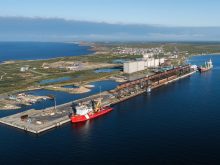One of the world’s leading oilseed analysts sees a gloomy outlook for Canadian flax in 2011.
Thomas Mielke, executive director of ISTA Mielke GmbH, which publishes Oil World,said Canada will face stiff competition in the European market from former Soviet Union countries.
He said a friend recently visited one of Kazakhstan’s six major agricultural holding companies.
That one company, which farms 600,000 acres, planted 148,000 acres of flax in 2010.
Mielke said farmers in other former Soviet Union countries, such as Ukraine and Russia, are also expanding their flax acres considerably in response to the 2009 Triffid incident, in which a genetically modified flax variety was found in shipments from Canada.
Read Also

Agriculture ministers commit to enhancing competitiveness
Canadian ag ministers said they want to ensure farmers, ranchers and processors are competitive through ongoing regulatory reform and business risk management programs that work.
These countries know European buyers are searching for supplies of non-GM flax.
Canada shipped 271,000 tonnes of flax to Europe in 2009-10, despite a restrictive Triffid protocol. That is down from the 430,000 tonnes shipped in 2008-09 but much higher than many trade observers had anticipated.
Mielke said bolstered supplies from the Black Sea region could hamper Canada’s trade with its biggest flax customer.
“It looks rather gloomy and I would expect a decline in Canadian exports of flaxseed to Europe,” he said.















